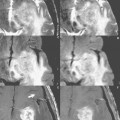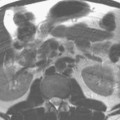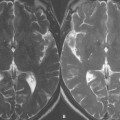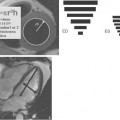108 Specific Absorption Rate (SAR)
The specific absorption rate (SAR) is a measure of the energy deposited per unit time in a specified tissue by the radiofrequency (RF) pulses applied in MR. When the human body is exposed to an external magnetic field, there exist two different energy levels that a proton (the hydrogen nucleus) can occupy. In quantum mechanical terms, the spin of the proton can either be parallel or antiparallel to the direction of the magnetic field. To receive a signal in MR, an RF excitation pulse is first applied that provides exactly the energy difference between the parallel and antiparallel levels. After excitation, the spins return to their original state, emitting the energy as an MR signal. The RF pulse will also interact with water molecules, accelerating their rotational motion. An increase in motion is equivalent to an increase in kinetic energy and represents an increase in temperature. The likelihood of this interaction scales with the fifth power of the patient’s circumference. Thus SAR is of even greater importance for the obese patient. It is also critical to note that doubling the main magnetic field from 1.5 to 3 T leads to a quadrupling of SAR if RF excitation is performed in the identical manner. Considerations related to SAR, therefore, inherently limit scanner performance by limiting the rate of RF energy deposition and cumulative deposition, in particular at higher field strengths (such as 3 T). This can lead to a reduction in slices per repetition time (TR), longer scan times, and “cooling” delays between acquisitions, if not otherwise compensated, an early challenge to clinical imaging at 3 T.
Stay updated, free articles. Join our Telegram channel

Full access? Get Clinical Tree








